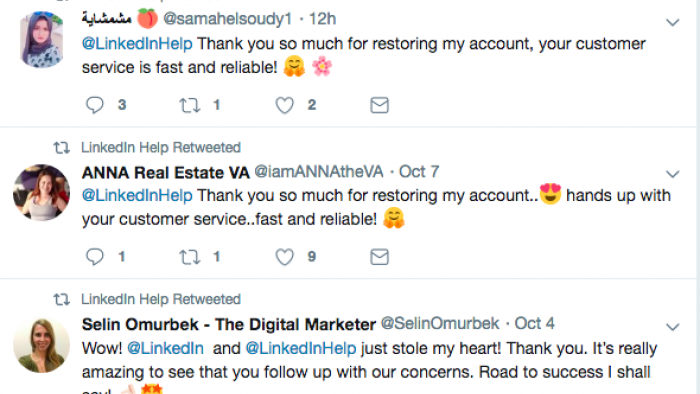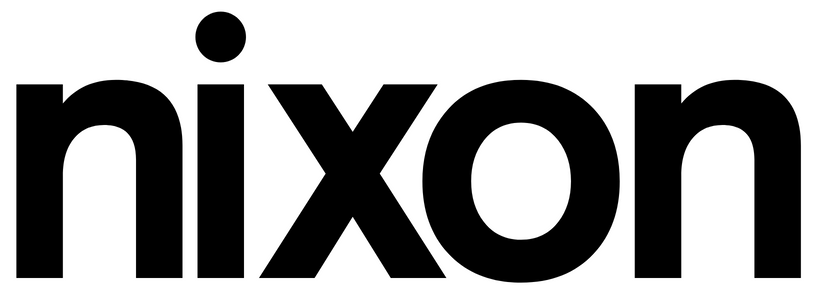Posted by Alex Hawker
But when you do, you’ll be running campaigns, increasing brand recognition and making connections with your customers. We have ten tips for topping Twitter.
1. Attract a good following
To begin with, you need to prime your profile for the followers that you want. Fill your media gallery with eyecatching and on-brand images, and write a short bio describing who you are (max. 160 characters). It’s important to nail your tone of voice in the bio, as it’s where followers will go first to get an idea of what to expect from your posts. Instead of just saying what your business does, focus on the more emotional motivators. For example, you wouldn’t say, "We sell properties in Cornwall", but instead, "Helping you find your perfect Cornish home". Instead of being a mundane, passive statement, it gives customers an idea about how your service benefits them – both functionally and emotionally.
2. Keep it quick
You get 280 characters on Twitter to make a post with (not a great deal) so say what you need to say in as few words as possible. Write something out and then remove what's not needed to make it as succinct as it can be. The character limit is really a good thing, as a quick, concise message is always more likely to be read – customers won’t have time to read a long post about your business.
3. Make it useful for your followers
Unlike Instagram, Twitter allows you to include links in the body of your posts. This makes it a really easy place to share articles, blog posts or links to your site. A clickable link is an immediate call-to-action that’s accessible (and therefore appealing). If your content is useful to your followers, you’ll become the go-to place for advice, expertise and inspiration in your sector. Who decides to follow you will depend on the personality of your business, so you need to make sure that personality shows through. Riverford is a great example, because its environmentally conscious ethos is woven into the content it shares.


4. Post often
Twitter is an incredibly fast-paced platform; keep on top of it with regular posts. Start with between three and five tweets spaced out throughout the week, then watch and react to how engagement changes with less or more. You may find that one post a day is enough, or even just a few each week – testing will teach you about your brand and your customers.
5. Use hashtags (when the time is right)
To make sure you’re staying current, you could take a look at the trending hashtags on the left hand side of the Twitter homepage. If it seems to apply to you, see if you can create a post that incorporates a hashtag in a meaningful way that’s authentic to your brand.
When it comes to hashtags, it’s best to limit yourself to one or two. Each word counts, so make sure you’re writing a strong message with a couple of tags that promote it. If possible, try to embed the hashtag within the text to save characters and make the message flow, e.g. "This #FathersDay, we’re celebrating…"
Don’t try to shoehorn in a hashtag for the sake of it. Not every post needs one, and they become a waste of time if irrelevant or forced. Interestingly, mention.com’s 2018 report on engagement within Twitter showed that Tweets that include no hashtags, emojis or handles have the highest average engagement. And of the three, hashtags were the culprits for actually having a negative effect on engagement in posts. So, they’re great for getting your brand’s profile in front of the people you want because you’ll appear near similar posts, but they don’t do wonders for boosting engagement.
If you’re using several hashtags, make sure they all serve different purposes and aren’t variations of one idea. For example, if you’re writing a post about the fact that it’s Friday, you don’t need three Friday-themed hashtags; just choose the one that will be most popular, along with others that are relevant to the post in a separate way.
Branded hashtags are short, on-brand phrases that can either be used for a campaign or as a more permanent slogan-type feature. The aim with these is to earn some user-generated content, so create something that makes people want to tell their stories and communicate with others. Coca-Cola’s #ShareACoke campaign is a good example. All the company did was print people’s names onto labels, then encourage them to share photos with #ShareACoke. The brand’s simple tactic was identifying the fact that people love being able to say "Hey, that’s my name", buy a bottle and take a few pictures. It invited user-generated content in a natural way.
6. Balance your content
You can post two different types of content: curated and created. Curated content is anything that exists on your profile that you didn’t make (retweets, external links), while created means original posts and blogs you’ve written, imagery you’ve produced, and any more of your own creations.
Retweeting is a good way to fill your Twitter feed with content from profiles that reflect your brand. It’s also nice for your followers as it breaks up the self-promotional content you’re putting out there. Don’t overdo it, though, or you risk drowning out your own messaging. Keep retweeted content below 20% of the total volume of your tweets.
It’s different for every brand, but it’s a good idea to have a guideline of about 60% curated and 40% created content (according to Hootsuite). Solely posting your own can actually lead to very low engagement. Instead, position yourself as a pool of wisdom in your sector, sharing different perspectives to provide your followers with as much useful insight as you can.
Airbnb has a great balance of content, often retweeting people’s Airbnb experiences as well as linking out to posts that followers will find interesting and enjoy reading.


7. Be present
Twitter has become a very popular place for customers to go and publicly broadcast their queries and complaints to businesses. Show your brand cares by keeping an eye-out for messages from customers, resolving queries as quickly as possible. Social media moves quickly, especially on Twitter, and 40% of users expect a response within one hour. A quick response rate will give you a trustworthy name.
A company that offers excellent customer service through Twitter is LinkedIn. With a profile specifically dedicated to dealing with customer queries (LinkedInHelp), they’re super-efficient on Twitter to the point where customers are routinely delighted. It’s not exactly exciting content, but it’s there to serve one purpose, which is to be responsive and professional – and it does that very well.


8. Make some lists
Twitter offers a ‘lists’ feature (found in the ‘profile and settings’ dropdown), which is another helpful way to boost your profile.
Public lists group accounts in categories that are visible to your followers, potentially helping them to find accounts that may be interesting or useful to them. Accounts will receive a notification when you add them to a public list, which might encourage them to take a look at your profile and/or follow you – another way to increase your spread of followers.
Private lists are the other option, where you can save the profiles of your competitors and keep up with what they’re posting without giving them a public following.
9. Make it relevant
It’s always best to plan posts ahead, so draw up a calendar of important dates applicable to your sector that you can be confident will form a trending hashtag, e.g. Valentine’s Day. This will also save you time further down the line, as a certain amount of your content can be determined in advance.
10. Analyse
Once you’re rolling on Twitter, measure your results. Twitter Analytics helps you to keep an eye on what works and where you need to make changes. You can view a month-by-month report on your most popular content, new followers and profile visits. This way, you can make sure you’re posting more of what your followers like, and less of what they don’t.
If you found this article useful, you might like Using Pinterest for Business and Make your Facebook Ads Successful.

